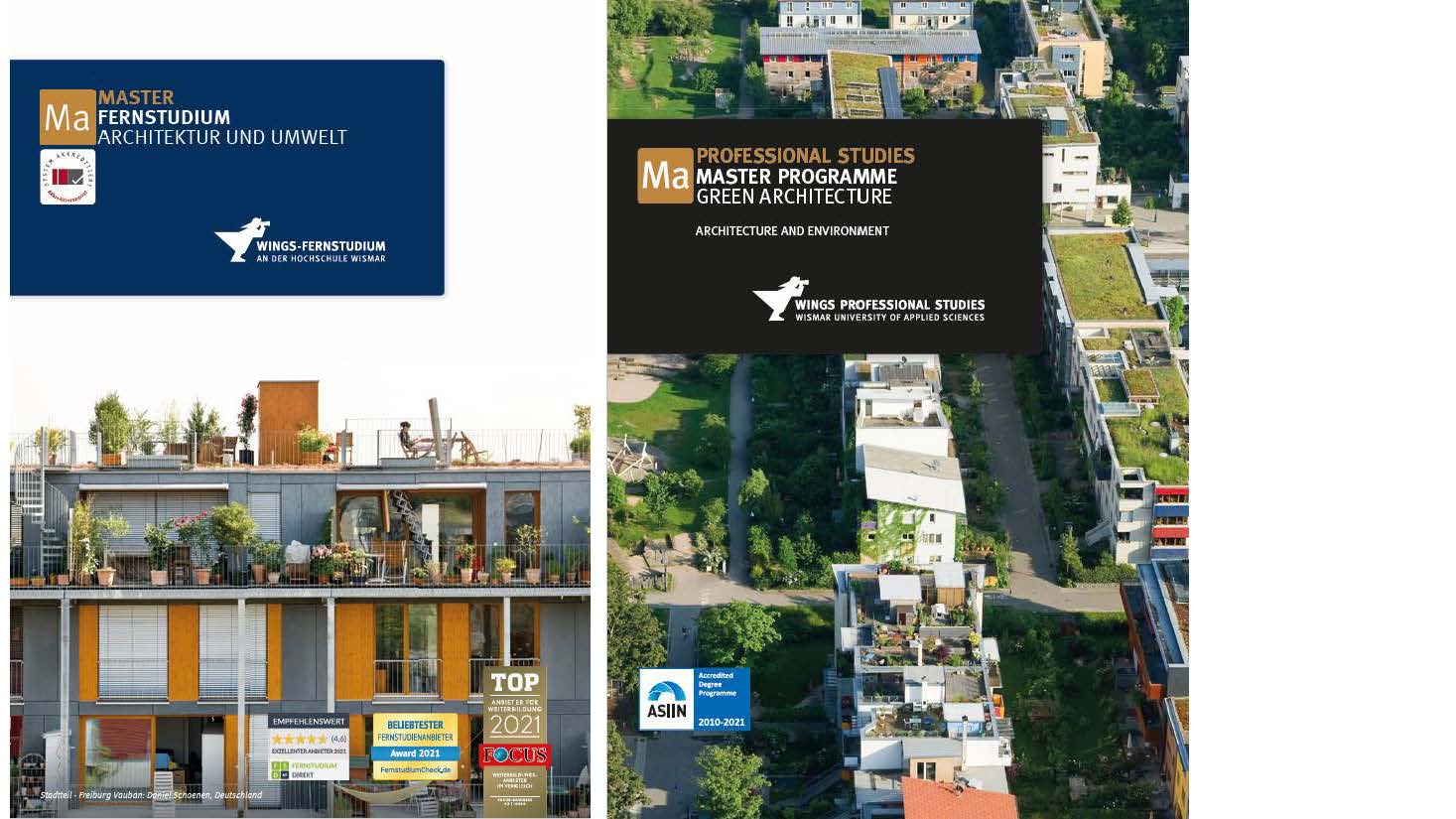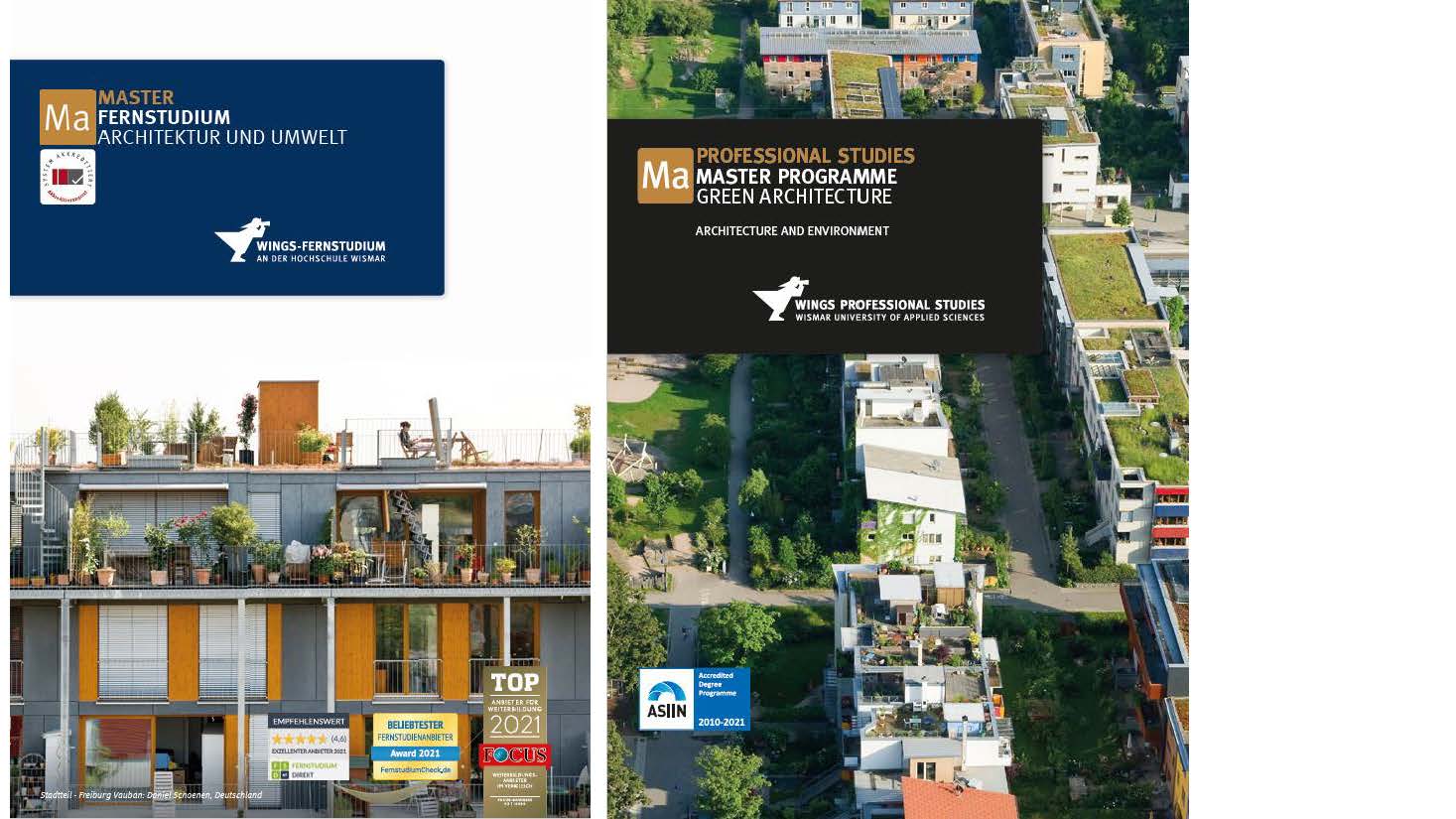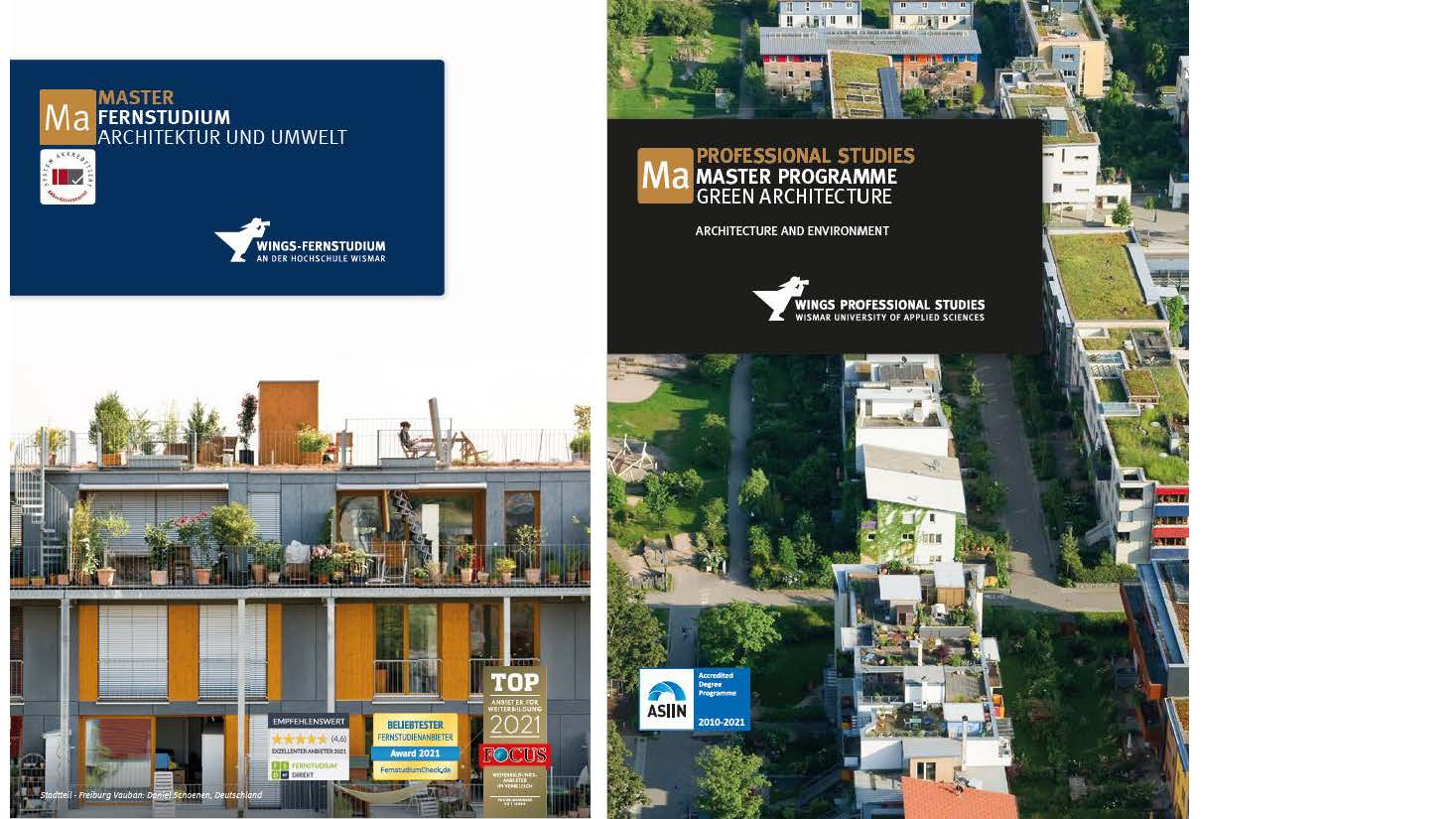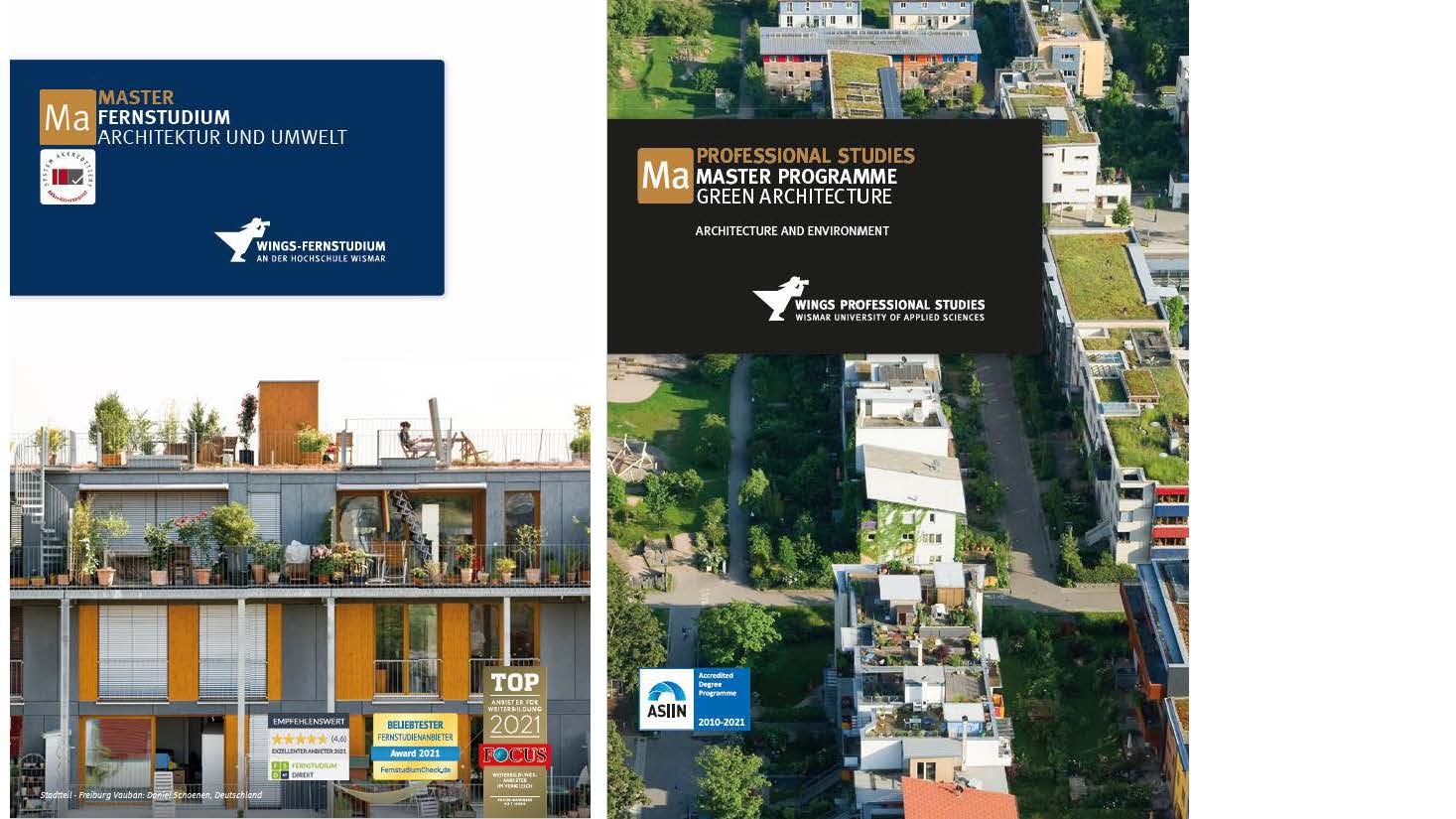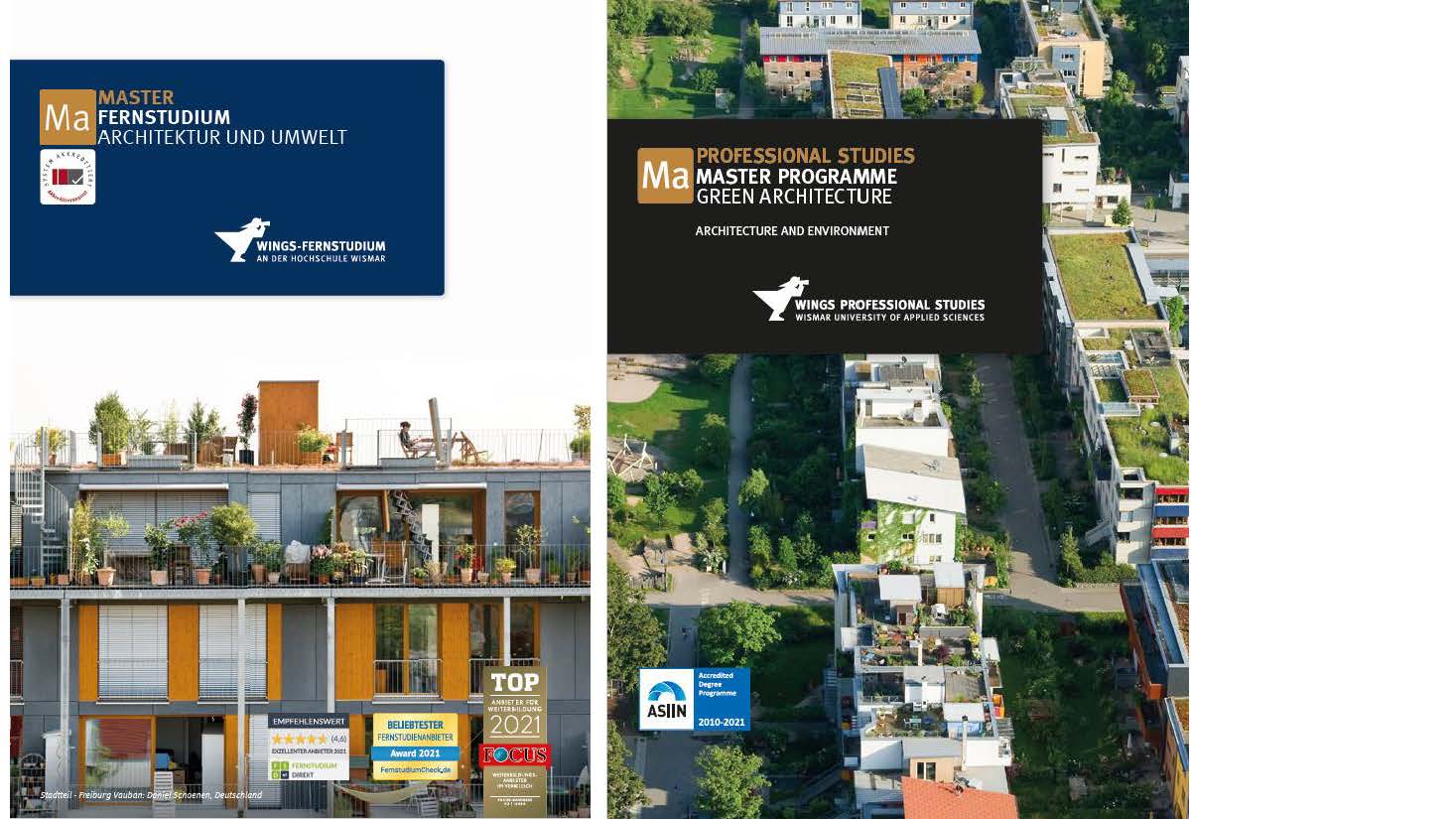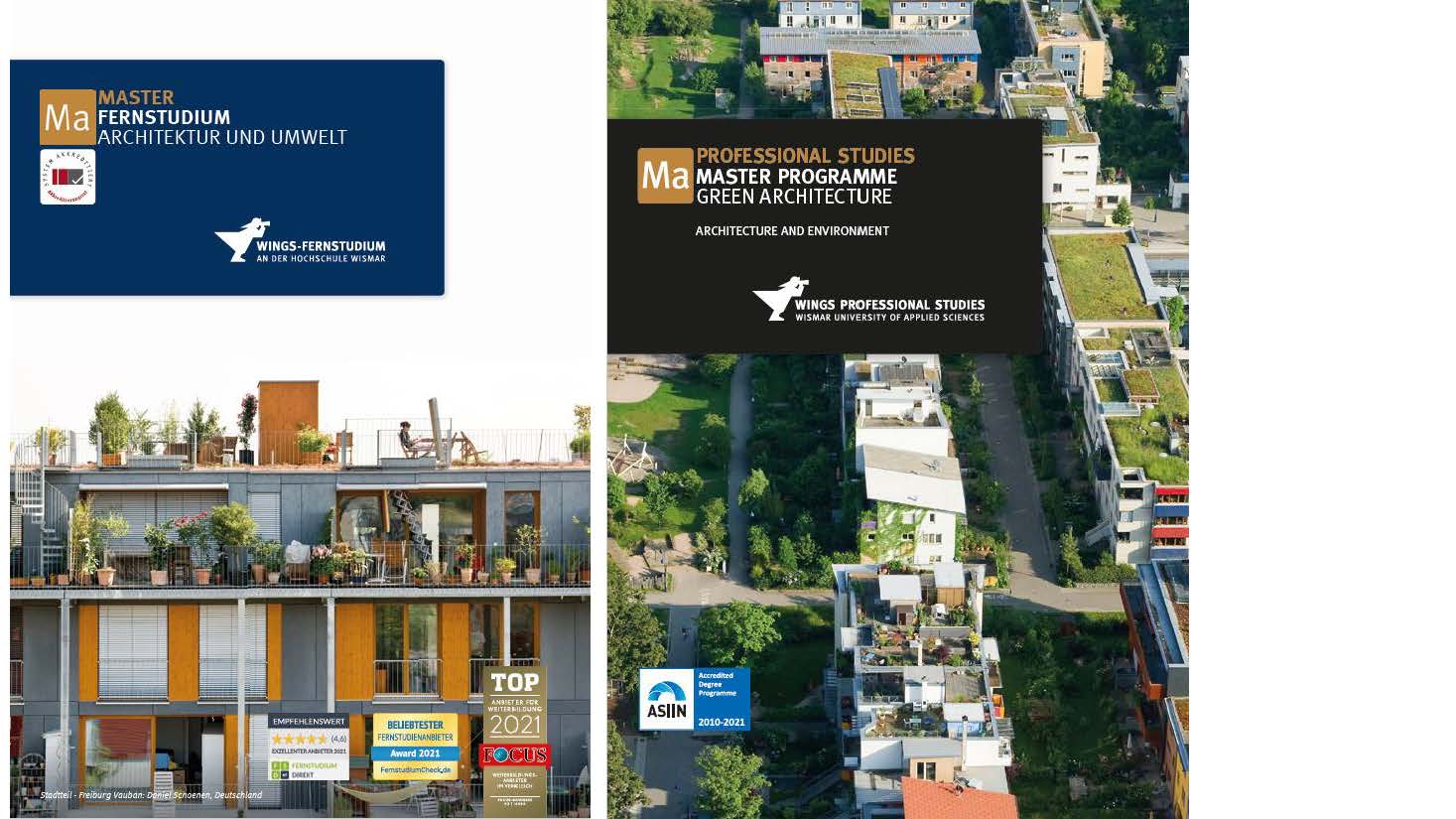Master's programme Green Architecture
Basic information
Project Title
Full project title
Category
Project Description
Project name: ESADEN_European Sustainable Architecture Design Education Network
Creation of a network that communicates the objectives of sustainable and environmentally responsible design of architecture in its environment throughout Europe and spreads and discusses sustainable environmental design concepts to a broad group of interested parties.
Project Region
EU Programme or fund
Description of the project
Summary
Project name: ESADEN_European Sustainable Architecture Design Education Network
Based on the study programme Master's Green Architecture on the Faculty of Design at Wismar University of Applied Sciences, initiated in 2006 by Prof. Wollensak Wismar University and Prof. Dr. Glücklich (†) University of Weimar (DBU Professorship for Ecological Building) with interdisciplinary partners (Prof. Dr. Hausladen formerly University of Munich / Prof. Dr. Hahn formerly University of Aalborg, TU Dortmund / Prof. Dr. Braungart EPEA, Prof. Dr. Oldenburg, Prof. Dr. Oldenburg TH OWL, Prof. Dr. Linden TH Lübeck, Prof. OtteJustus Liebig University Giessen Landscape Ecology and Planning ...) a network of inter-university, cross-university and interdisciplinary architectural education has been established.
The study programme, which aims at the sustainable architectural design of our environment, is taught barrier-free and digitally on a part-time basis. The integrated classroom teaching takes place within the framework of 3 practical workshops per semester at different teaching and learning locations, applicable to the study content (Bundesumweltamt Dessau / Freiburg Vauban / Akademie Mont Cenis Herne / Galerie Aedes Berlin / Welterbestätte Wismar / Alnatura Darmstadt / DAC Copenhagen Denmark).
Since 2011, the study programme is also available in English-language. Since then, numerous international architects from Europe and all over the world have also been studying the topic of architecture and the environment in the inter-university and interdisciplinary degree programme while taking part in the intensive workshops on the sustainable structural design of our environment. As part of the project to establish ESADEN, the existing structure of the study programme is to be expanded into an inter-university teaching and learning-cluster or a network for teaching sustainable and environmentally responsive design in the field of architecture and its environment.
Key objectives for sustainability
The aim of the project is to communicate sustainable architectural design concepts for buildings and urban quarters in order to make cities more liveable. The target group is all those working in the field of planning and design, architects, urban planners, public decision-makers,...
The teaching is in German and English and is characterised by the application of design-related topics and issues. In order to effectively anchor the contemporary requirements for networked planning processes and team-oriented, interdisciplinary working methods in the course of study, the modules are accompanied by current practice-related projects, taking into account all socially relevant factors. Through the knowledge imparted in the curriculum in the field of sustainable, energy- and resource-efficient architecture, students are given the opportunity to develop research and development competence in the field of environmentally friendly construction.
Among other things, the aspects listed below are dealt with:
Significance of ecosystems and their influence on bioactivity
Development of materials and products within technical and natural cycles
Life cycle of buildings
Knowledge in the field of sustainable, energy and resource efficient architecture
Application of low tech and passive strategies
LightTech and Resource Saving
HighTech and Active strategies
Methods, tools and procedures for the development of holistic building and urban design
Building materials and pollutants from an environmental perspective; assessment concepts, instruments and regulations
Sustainable water and nutrient cycles in the built environment
The objective is achieved by teaching methodological skills for planning sustainable concepts for an efficient infrastructure, sufficient affordable housing and modern mobility and recreation facilities. This also includes the efficient use of land, the protection of the environment and sufficient urban nature.
Key objectives for aesthetics and quality
The aim of the project is to provide methodological knowledge to build a style design guide for sustainable architectural design of buildings in their environment. The aim of the course is to help students recognise the complexity and regional design principles of architecture in its environment and to acquire the necessary problem-solving skills required to find an appealing and sustainable environmental design and its urban integration.
This goal is achieved through application and project-oriented study in small groups. The part-time Master's programme in Architecture and the Environment is oriented towards the professional tasks of planning, design, architecture and promotes the scientific examination of the artistic-creative, spatial-plastic, technical-constructive and economic-social design of buildings in their environment.
Students are enabled to
- to think creatively and to control and integrate the achievements of others involved in the planning process
- think three-dimensionally and develop designs methodically scientifically and artistically
- apply knowledge of historical and cultural references in international architecture
- apply knowledge of the influence of the visual arts on the quality of architectural design
- to develop an understanding of the heritage of the built environment and of issues relating to the protection of historical monuments
- to apply awareness of the interconnections between architecture and philosophical and political currents and the cultural development of other creative disciplines.
This is achieved by imparting methodological knowledge for the development of a style-giving design guide for the sustainable architectural planning of buildings in their environment.
The topic was discussed in detail at the conference on the occasion of the 10th anniversary of the degree programme.
https://www.wings.hs-wismar.de/de/fernstudium_master/architektur_und_umwelt
Key objectives for inclusion
In the ESADEN network, the goal is that all participants, regardless of age, gender, disability, race, ethnicity, origin, religion or economic or other status, are empowered and their social, economic and political inclusion is promoted.
The structure of the part-time Master's programme makes it more open than traditional architecture programmes to the interests of inclusion. Inclusion is lived in the degree programme, the topic is an important part of the teaching content, especially within the framework of Integrative Design in the module Planning and Design as well as in Design in Existing Contexts in the specialisation module "Building with Existing Contexts".
In order to enable students to optimally combine their studies and careers, our teaching concept combines the following modules:
Self-study: Self-study phases are combined with digital aids under tutorial supervision.
Classroom attendance: Classroom events take place on three weekends per semester at various locations throughout Germany. The lectures are combined with design discussions and topic-related excursions on site. The venues are designed to be barrier-free so that everyone can move around and take part in the events.
Online teaching: Lectures and consultations are held via the online teaching system, as well as preparation and follow-up for the classroom events.
myWINGS learning platform: In order to bridge the physical distance, the myWINGS learning platform is available to students throughout the entire distance learning programme. Here students have the opportunity to view all their study-related data. They also have digital access to the teaching materials, tools and practical examples as well as the curriculum and deadlines.
Awareness of the goals of inclusion is achieved through the promotion of teamwork skills and interdisciplinary cooperation in the design of sustainable building concepts.
Results in relation to category
More than 360 architects have successfully completed the study programme since 2006 and form an alumni network of sustainable architectural design. In recent years, interest in the programme has increased significantly among both national and international students.
Thanks to the additional knowledge, skills and abilities in environmentally sound design, interdisciplinary learning and teamwork, graduates are in high demand on the labour market in a wide variety of fields, including interdisciplinary ones.
The initiation of practice-related projects in cooperation with numerous universities, the Federal Environment Agency, the Federal Institute for Materials Research, the Münster Chamber of Trade and Industry, the Mont Cenis Academy, the MV Chamber of Architects and public state building authorities, as well as the implementation of conformity tests for the award of the "HafenCity Environmental Label - Sustainability in Construction" with the lecturers, leads to ideas for a sustainable design of our environment being discussed and, if possible, also initiated.
The implementation of demonstration buildings makes an important contribution to climate protection and the creation of a higher quality of design.
How Citizens benefit
Three practice-related projects are worked on during the course of study. The tasks are set in cooperation with municipalities and public planning institutions such as the University of Rostock, the Christian-Albrechts University of Kiel, the Desy Campus in Hamburg, the Federal Environment Agency in Bad Elster and Berlin Marienfelde, Campus Delbrück Berlin Buch or the Federal Institute for Materials Research in Berlin.
A great deal of emphasis is placed on participation in the project workshops, for example in the Wismar Campus project work under the supervision of interdisciplinary planning experts coordinated by Mr von Zadow.
The students learn to work methodically and to understand the complex issues and diverse opinions and views on sustainable building and to apply them in the project work.
The results or ideas of the planning considerations create ideas for sustainable design. The presentations of the design results and excursions that take place during the workshops also serve to better involve affected citizens in the planning process.
Innovative character
The existing network of the study programme provides the basis and the necessary knowledge of sustainable architectural design concepts for buildings and urban quarters in their surroundings. It is to be continued/developed and expanded into a platform accessible to "everyone".
By communicating the objective of sustainable and environmentally responsible architectural design to a broad group of interested parties throughout Europe, sustainable environmental design concepts are discussed and disseminated. A breeding ground for multipliers is created, which enables the further development of thoughts on environmentally sound architecture into a holistic "design vision" and promotes creative and cultural exchange.
An interdisciplinary team of teachers - practising architects and engineers, scientists and urban planners from various colleges, universities and institutions - is involved in teaching the Master's programme. They are all proven experts with strong international reputations in the field of sustainable construction with a broad scientific basis and practical showcase projects - nationally and internationally - and contribute their knowledge to this degree programme. Current and future-oriented projects and practical case studies are presented and dealt with scientifically, taking into account all socially relevant factors, in order to promote the idea of sustainability. (cf. programme and lecturer brochure)
The integrated didactic optimally combines "classical" learning methods with contemporary digital possibilities.
In self-study, students can organise their learning activities independently, flexibly and individually. In the online phases, they can receive additional new input at any time.
The combination of online learning and application-oriented teaching in the attendance phases also increases digital competence for the current and future world of work through the use of diverse digital media. (cf. Zukunft der Arbeit BMBF).

